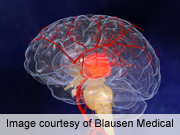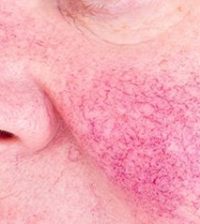- Good Blood Pressure Control Could Prevent Fibroids
- AI Matches Experts in Spotting Radiology Errors
- Melatonin Gummies to Get Safety Labeling, Child-Safe Bottles After Poisonings
- CDC Warns of 19 Cases of Botched Botox Shots in 9 States
- A More Diverse Nature Brings Better Mental Health
- Blinking: It’s About More Than Moistening the Eye
- Brain’s Cerebellum Could Help Direct Prosthetic Limbs
- Complications in Pregnancy Linked to Long-Term Health Risks for Women
- ‘One and Done’: Scientists Develop Vaccine That May Fight Any Viral Strain
- Walking Your Way to Better Health
U.S. Stroke Deaths Fell 30 Percent Over Past Decade


Stroke deaths in the United States have been dropping for more than 100 years and have declined 30 percent in the past 11 years, a new report reveals.
Sometimes called a brain attack, stroke is a leading cause of long-term disability.
Stroke, however, has slipped from the third-leading cause of death in the United States to the fourth-leading cause. This, and a similar decline in heart disease, is one of the 10 great public-health achievements of the 20th century, according to the U.S. Centers for Disease Control and Prevention.
Even so, there is still more to be done, said George Howard, a professor of biostatistics in the School of Public Health at the University of Alabama at Birmingham (UAB).
Howard is co-author of a scientific statement describing the factors influencing the decline in stroke deaths. The statement is scheduled for publication in the journal Stroke.
“Stroke has been declining since 1900, and this could be a result of changes leading to fewer people having a stroke or because people are less likely to die after they have a stroke,” Howard said in a university news release. “Nobody really knows why, but several things seem to be contributing to fewer deaths from stroke.”
It is possible that the most important reason for the decline is the success in lowering Americans’ blood pressure, which is the biggest stroke risk factor, he said. Other reasons for the decline may include reductions in smoking, improved cholesterol levels and better treatments for stroke patients.
“We don’t know how much all of the sources are contributing,” Howard said. “Certainly, we want it to keep going down. But if we don’t understand why the numbers are decreasing, we can’t work toward that trend.”
Howard said the 30 percent decline in stroke deaths in the last 11 years is “a big deal, so you could argue that our battle is won. But I think [there’s still] a lot to be accomplished in this area.”
Dr. Andrei Alexandrov, a professor of neurology and director of the UAB Comprehensive Stroke Center, said the decrease in stroke deaths “likely is attributable not only to better … blood pressure control over recent years, but also to a greater number of neurological specialists focused on stroke care across many hospitals in the United States and abroad.”
“Better early stroke recognition and specialized care can also reduce the risk of dying from stroke,” Alexandrov said.
One finding in the report — the lower death rate in people under 65 — needs to be more carefully looked at, said Alexandrov, who was not involved in writing the report. This deserves further attention because many of those who experience a stroke in the southeastern U.S. are young adults.
“More efforts are needed to reduce [stroke death rates] and prevent first-ever stroke incidence, as well as to reverse disability following stroke by improving patient access to hospitals providing clot-busting therapy,” Alexandrov said.
More information
The U.S. National Institute of Neurological Disorders and Stroke has more about stroke and stroke prevention.
Source: HealthDay
Copyright © 2024 HealthDay. All rights reserved.










